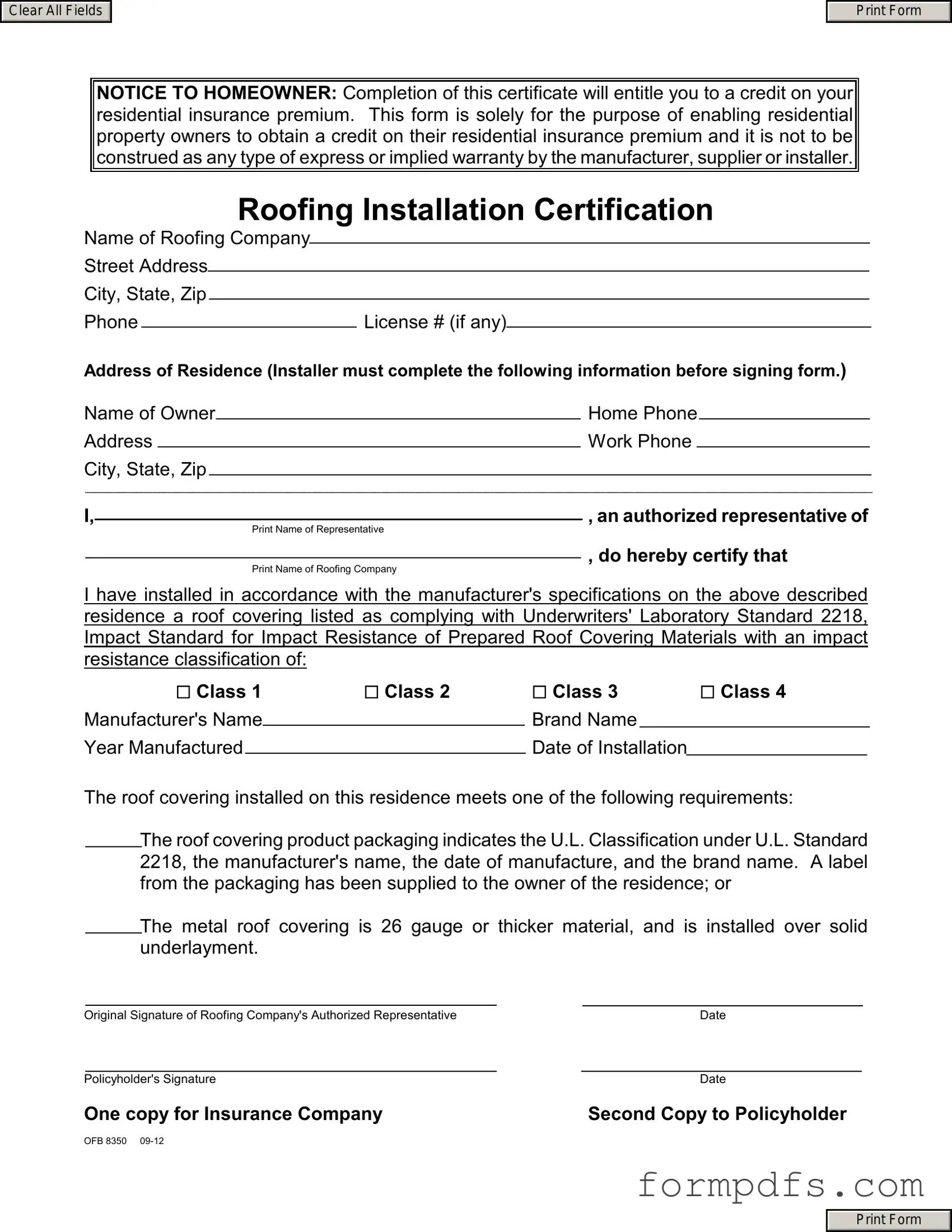What is the purpose of the Roofing Certificate form?
The Roofing Certificate form is designed to help homeowners obtain a reduction in their residential insurance premiums. By completing this form, homeowners can certify that their roof has been installed according to specific standards, which may make them eligible for lower insurance rates. It's important to note that this form does not serve as a warranty from the manufacturer, supplier, or installer; it simply provides the necessary documentation for the insurance company.
Who needs to fill out the Roofing Certificate form?
The form must be completed by an authorized representative of the roofing company that installed the roof. This representative will provide details about the installation, including compliance with the relevant impact resistance standards. Homeowners will also need to provide their personal information and details about their residence to ensure accurate processing by the insurance company.
What information is required on the Roofing Certificate form?
The form requires various pieces of information, including the roofing company's name, address, phone number, and license number (if applicable). Additionally, the form asks for the homeowner's name, contact information, and the address of the residence. The roofing company must also specify the type of roofing material used, its impact resistance classification, and the date of installation. This information is crucial for the insurance company to verify eligibility for premium reduction.
What happens if the form is filled out incorrectly?
Filling out the form incorrectly can lead to delays in processing or even denial of the premium reduction. It's essential to ensure that all information is accurate and complete. Any intentional misrepresentation can be considered fraud, which may have serious legal consequences. Therefore, both homeowners and roofing company representatives should double-check the details before submitting the form.
How should the completed Roofing Certificate form be submitted?
Once the form is completed and signed by the authorized representative of the roofing company, it should be distributed in two copies. One copy must be retained by the homeowner for their records, while the second copy should be sent to the insurance company. This ensures that both parties have the necessary documentation to support the insurance premium reduction request.
